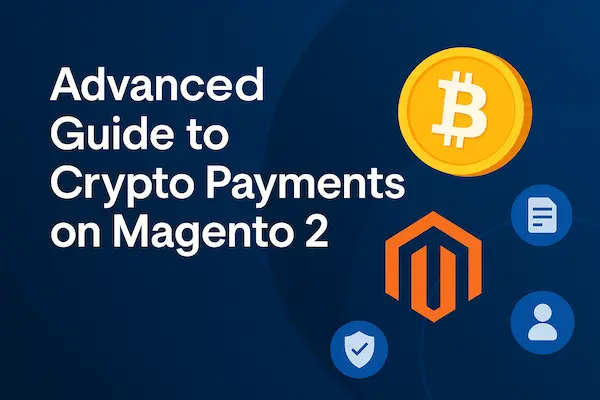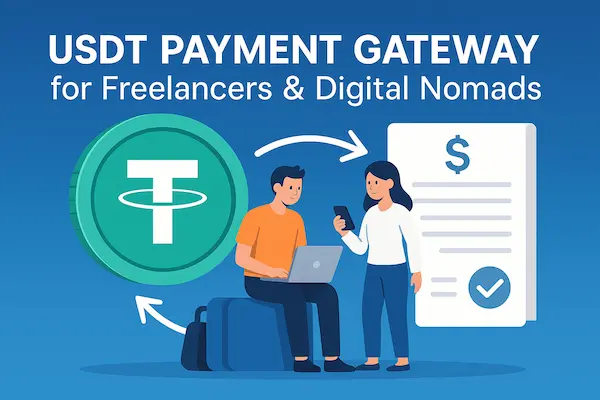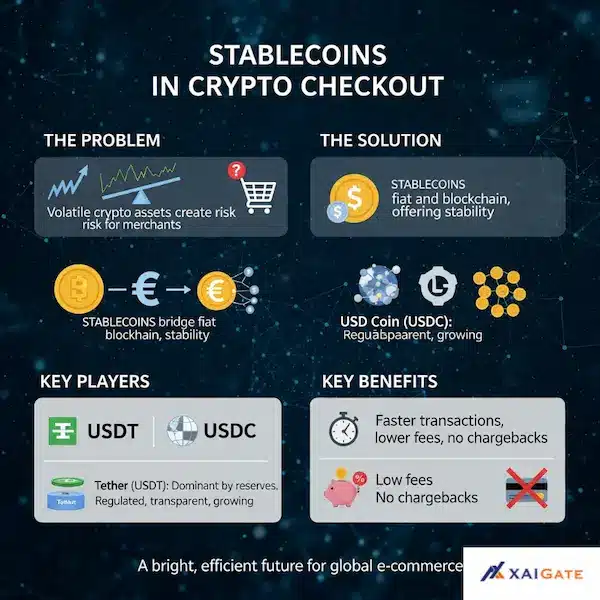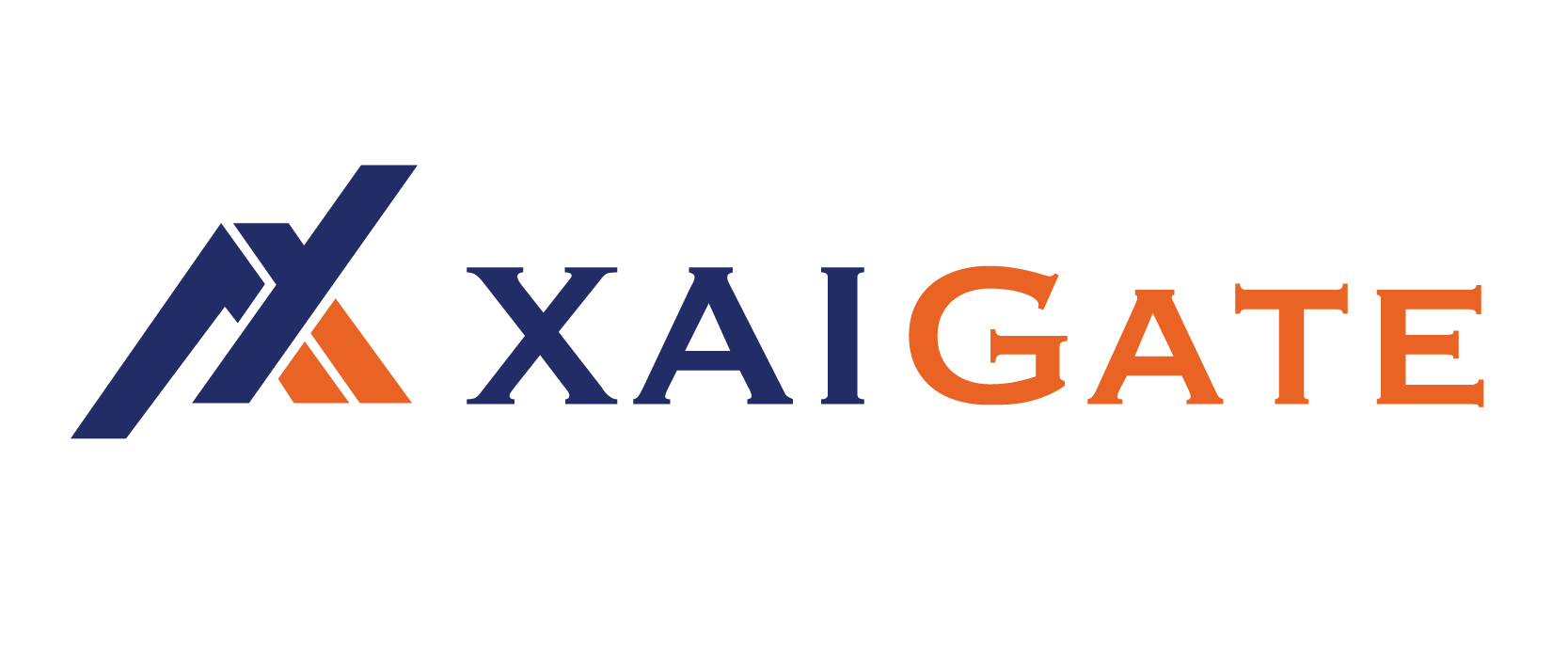In today’s fast-evolving eCommerce landscape, cryptocurrency is no longer a fringe trend—it’s becoming an essential part of modern payment systems. For Magento 2 store owners, enabling crypto payments can be a game-changer, helping you unlock new markets, cut transaction fees, increase data security, and future-proof your business against the constraints of traditional financial infrastructure.
This advanced guide walks you through everything you need to know about Crypto Payments on Magento 2, from the technical side of integration to legal compliance, user experience best practices, and long-term scaling strategies.
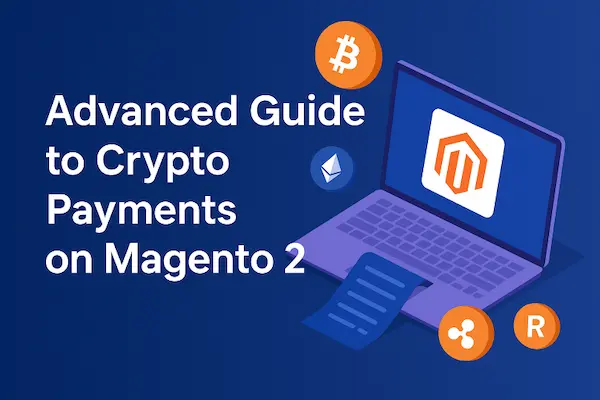
Contents
- 1 Why Offer Crypto Payments on Magento 2?
- 2 Supported Cryptocurrencies for Magento 2
- 3 Integration Methods for Crypto Payments on Magento 2
- 4 Setting Up Crypto Payments on Magento 2 with XAIGATE
- 5 Comparison Table: Crypto Payment Gateways for Magento 2 (2026)
- 6 Enhancing the User Experience (UX)
- 7 Security Considerations
- 8 Tax and Legal Compliance
- 9 Handling Refunds and Disputes
- 10 Advanced Features for Power Users
- 11 Future-Proofing Your Store
- 12 FAQs – Crypto Payments on Magento 2
- 13 Final Thoughts
Why Offer Crypto Payments on Magento 2?
Magento 2 is a flexible, open-source eCommerce platform trusted by thousands of businesses worldwide. Adding crypto support to your Magento store provides numerous advantages that go far beyond just enabling a new crypto payment method. Crypto is borderless, decentralized, and highly adaptable, making it a perfect fit for modern eCommerce needs.
Here’s why forward-thinking businesses are integrating crypto payments into their Magento 2 stores:
- Global Reach: Cryptocurrency allows you to accept payments from customers in countries where credit card access is limited or unavailable. This opens up vast new markets with minimal friction.
- Lower Fees: Traditional payment processors typically charge between 2%–4%. Crypto payment solutions like XAIGATE reduce that to as low as 0.2%, helping you retain more profit.
- No Chargebacks: Blockchain transactions are irreversible, eliminating chargeback fraud and disputes—one of the major pain points for merchants.
- Access to Web3 Customers: Crypto-native consumers are growing rapidly, especially among Gen Z and digital nomads. Offering crypto can significantly boost conversions within this demographic.
Table 1: Detailed Comparison Between Crypto Payments on Magento 2 and Traditional Payment Gateways
| Feature / Criteria | Crypto Payments on Magento 2 | Traditional Payment Gateways (Credit Card, PayPal, Bank Transfer) |
|---|---|---|
| Transaction Speed | Near-instant to a few minutes depending on blockchain network congestion. | Minutes to several days depending on bank processing and settlement times. |
| Transaction Fees | Typically lower; network fees vary by cryptocurrency (can be negligible for some coins). | Often higher due to payment processor and bank fees (1.5%–3.5%+). |
| Global Accessibility | Borderless; anyone with a crypto wallet can pay, no bank account required. | Limited by banking infrastructure and country restrictions. |
| Chargeback Risk | No chargebacks once a transaction is confirmed. | High chargeback risk, especially with credit cards and PayPal. |
| Currency Volatility | High; value of received crypto may fluctuate unless instantly converted to fiat. | Stable; amounts in fiat remain constant once processed. |
| Integration Complexity | Requires crypto payment gateway integration (e.g., BitPay, Coinbase Commerce, XaiGate). | Native support in most e-commerce platforms; many plug-and-play options. |
| Compliance & Regulation | Must comply with crypto regulations in your region (KYC, AML, tax reporting). | Established legal frameworks; compliance handled largely by payment processors. |
| Security | Strong cryptographic security; funds controlled via private keys. | Secure but dependent on third-party processors and PCI compliance. |
| Customer Base | Appeals to tech-savvy and privacy-conscious users; growing adoption. | Appeals to mainstream shoppers; established trust and familiarity. |
| Settlement Options | Crypto, fiat conversion, or a mix depending on gateway settings. | Always settled in fiat currency. |
Supported Cryptocurrencies for Magento 2
A wide range of cryptocurrencies are accepted by leading Magento 2 crypto payment gateways. Depending on your business model, you may choose to accept stablecoins, high-value coins, or low-fee chains.
Most Magento crypto integrations support:
- USDT, USDC (Stablecoins): Stablecoins are pegged to the USD and offer pricing consistency, which is ideal for merchants who want to avoid volatility.
- Bitcoin (BTC): The most recognized cryptocurrency globally. It appeals to crypto investors and early adopters.
- Ethereum (ETH): Popular for DeFi users and Web3 communities.
- Solana (SOL), Polygon (MATIC): Known for fast speeds and low transaction fees—great for high-volume, low-ticket stores.
XAIGATE allows merchants to configure which coins to accept and automatically pulls real-time price conversions at Magento crypto checkout, ensuring smooth customer experience.
Integration Methods for Crypto Payments on Magento 2
Magento 2 offers a modular structure, allowing crypto payments on magento 2 to be integrated in various ways depending on your technical skills, business needs, and risk profile.
1. XAIGATE Plugin for Magento 2
This is the most seamless and secure method for adding crypto to your Magento crypto checkout. The XAIGATE plugin is designed specifically for Magento 2 and includes:
- Simple installation through Composer or ZIP upload
- No KYC required for non-custodial usage
- Fully embedded Magento crypto checkout widget with QR code generation and auto-detection of payments on-chain
- Compatible with both mobile and desktop layouts
2. API-Based Integration
For more advanced and customizable setups, XAIGATE offers a full API suite that allows:
- Real-time transaction monitoring via webhooks
- Dynamic pricing and smart contract-based billing
- Headless commerce integration with frontend frameworks
3. Redirect-Based Payment Pages
If you want minimal server-side development, the redirect method is perfect. Customers are sent to a secure, branded payment page hosted by XAIGATE. After payment confirmation, they are returned to your Magento order confirmation page.
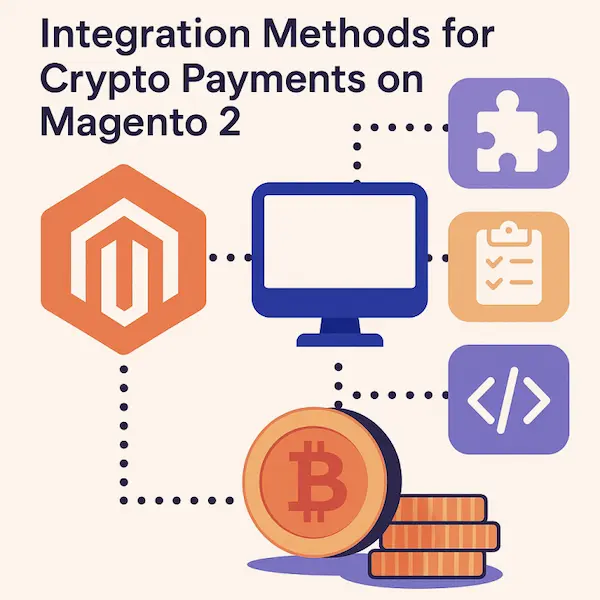
Setting Up Crypto Payments on Magento 2 with XAIGATE
Enabling crypto payments on Magento 2 using XAIGATE is a streamlined process, even for store owners with limited technical experience. The platform is optimized for ease of use, and their support team can walk you through the setup if needed.
Setup Workflow:
- Create a merchant account on XAIGATE. Registration is fast and requires minimal documentation for non-custodial access.
- Download and install the Magento 2 extension. This can be done through Composer or by uploading the module via the admin panel.
- Configure supported coins and wallet addresses. You can add multiple addresses per coin and configure fallback options.
- Set payment preferences. These include timeout durations, confirmation thresholds, geo-blocking, and refund policies.
- Enable test mode for sandbox transactions. This ensures everything functions correctly before going live.
- Go live and monitor in real time. Transactions are logged within your Magento admin dashboard, and notifications are sent via webhook.
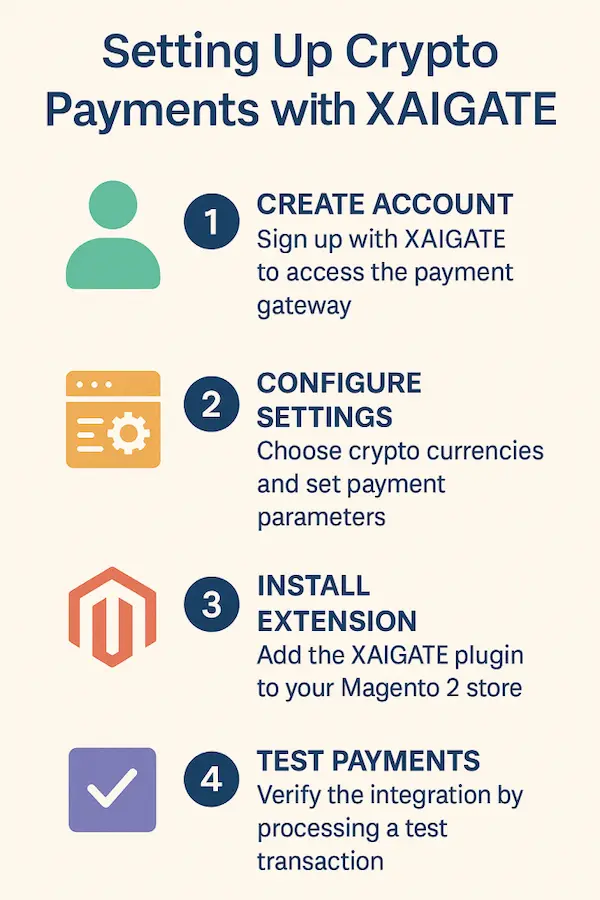
Comparison Table: Crypto Payment Gateways for Magento 2 (2026)
| Feature | XAIGATE (Magento 2 Module) | CoinGate Plugin | NOWPayments | BTCPay Server (Open‑Source) |
|---|---|---|---|---|
| Integration Type | Official Magento 2 extension via Composer or ZIP | Official extension for Magento 2 | Plugin + REST API | Fully self-hosted; developer setup required |
| Token & Coin Support | Supports 9,800+ tokens incl. BTC, ETH, USDT, USDC on multiple chains | ~70 coins, stablecoins via CoinGate network | ~300+ tokens incl. stablecoins | Custom selection; community-configured |
| Transaction Fee | 0.2%–0.3% flat, no hidden charges | ~1% per transaction | 0.5%–1.0% depending on volume | 0% platform fee (self-hosting costs only) |
| Settlement Speed | Under 5 minutes (chain-dependent) | Minutes to hours depending on network | A few minutes for supported tokens | Variable, based on node/network latency |
| Custody Model | Fully non-custodial: merchant controls private keys | Custodial via CoinGate infrastructure | Optional Custody | Fully non-custodial |
| Refund / Chargeback Logic | Manual refund feature optional; no chargebacks | Refunds processed per CoinGate policy | Refund capabilities via API | Needs custom implementation |
| Setup Complexity | Low — install plugin, activate module, configure from Magento admin | Moderate — install plugin, connect accounts | Moderate — install plugin and configure API | High — requires hosting, security, and maintenance |
| KYC / Compliance Model | Optional tiered KYC (No‑KYC mode available) | Mandatory KYC for account creation | KYC triggered based on transaction volume | No enforced — self-managed compliance |
| Support & SLA | 24/7 support, SLA-backed uptime | Email & ticket-based support | Commercial-level support available | Community-based support |
Why Magento 2 merchants prefer XAIGATE:
-
Plugin-Ready Setup: Integrates directly in Magento 2 stores via Composer or ZIP upload—no coding needed.
-
Extensive Token Access: Supports thousands of tokens including stablecoins, ideal for global business flows.
-
Transparent Pricing & Fast Settlement: Low flat fees and blockchain-based payout in under five minutes.
-
Merchant Control: Non-custodial architecture offers complete wallet sovereignty and reduces third-party risk.
-
Flexible KYC Options: No-KYC mode lets low-volume users onboard quickly; compliance tiers scale as needed.
-
Built for Growth: Enterprise reliability with plugin updates, advanced refund logic, and real-time notifications
Enhancing the User Experience (UX)
Many customers are still new to crypto payments, so it’s crucial to create a Magento 2 blockchain payments checkout experience that feels familiar, fast, and trustworthy. A frictionless UX not only improves conversion rates but also builds customer confidence in using crypto.
Tips to Optimize UX for Crypto Payments on Magento 2:
- Display countdown timers for payment windows, so users know how long the wallet address remains valid.
- Offer clear instructions and tooltips, such as “What is USDT?” or “How to scan a QR code with MetaMask.”
- Show real-time payment detection and status updates (e.g., “Awaiting Confirmation”, “Payment Received”).
- Automatically redirect customers to order confirmation pages once payment is confirmed.
- Enable multi-language support to serve a global customer base effectively.
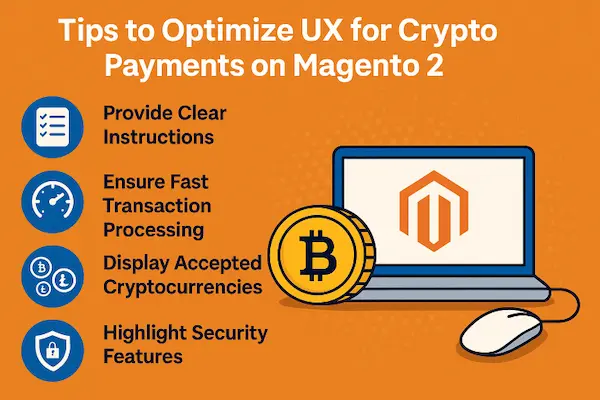
Security Considerations
When it comes to Crypto Payments on Magento 2, security is not optional—it’s essential. Unlike fiat processors, crypto transactions are public, irreversible, and final. This makes preventive security measures even more critical.
Key Security Best Practices:
- Use non-custodial solutions like XAIGATE to eliminate fund holding risk.
- Require multiple confirmations on the blockchain before releasing products or services.
- Enable transaction monitoring using blacklists and AML tools to flag suspicious wallets.
- Set timeout rules for transactions and automatically void unpaid invoices.
- Consider enabling geo-fencing to block transactions from high-risk jurisdictions.
Tax and Legal Compliance
Crypto regulation is complex and jurisdiction-dependent. However, there are common best practices you can implement to protect your business and stay compliant:
- Record fiat value at time of sale. Most tax authorities require that crypto be reported in local currency.
- Store transaction metadata. Keep logs of wallet addresses, transaction hashes, IP addresses, and timestamps.
- Understand local laws. In some countries, crypto is treated as property; in others, as a financial asset.
- Disclose volatility risks and refund terms in your store policies to ensure transparency.
Using XAIGATE’s admin panel, you can export all transaction data and reconcile payments for accounting or audit purposes.
Handling Refunds and Disputes
Because crypto is irreversible by design, managing refunds and disputes requires extra attention. While rare, payment mistakes or overpayments can happen, and your policy should reflect how these will be handled.
Best Practices for Refunds:
- Define a standard refund policy: refund in original crypto amount, fiat equivalent, or store credit.
- Use multi-signature wallets for large or sensitive transactions to prevent unauthorized fund movement.
- Offer manual dispute resolution through customer support with clear steps for verification.
- For overpayments or duplicates, allow users to submit transaction hashes as proof and request balance return.
Advanced Features for Power Users
For enterprise-grade stores or Web3-native projects, Magento’s flexibility shines when combined with advanced crypto capabilities:
- Dynamic Pricing: Adjust prices based on live exchange rates with custom spread margins.
- Recurring Billing: Enable crypto subscriptions using smart contract logic.
- Loyalty Tokens: Create reward systems that issue tokens for repeat purchases or referrals.
- Geo-Blocking and Wallet Whitelisting: Control who can pay and with what wallets for added compliance.
- Custom Invoicing: Generate branded invoices with expiration timers and token-specific instructions.
Performance Optimization
High-performance Magento 2 blockchain payments checkout is vital for retaining customers, especially those accustomed to Web2 speed. Crypto integrations can introduce delays if not optimized correctly.
Optimization Tips:
- Use asynchronous webhooks to update order statuses without refreshing pages.
- Cache exchange rates for 30–60 seconds to reduce API load and avoid unnecessary delays.
- Optimize Magento’s backend to handle transaction logging and confirmations efficiently.
- Offload high-frequency checks to background workers or cron jobs.
Customer Education
Educating users who are new to crypto can significantly improve conversion rates and reduce support tickets.
Ideas to Educate Crypto Customers:
- Add a “How to Pay with Crypto” FAQ section.
- Offer GIF walkthroughs or short videos explaining the payment process.
- Provide tooltips at Magento 2 cryptocurrency checkout for wallet setup, scanning QR codes, or payment timing.
- Encourage use of stablecoins to reduce confusion over price volatility.
Future-Proofing Your Store
The crypto world is constantly evolving, and so should your Magento store. Being adaptable ensures long-term viability and continued growth.
What to Watch For accept crypto payments on megento 2:
- Layer-2 Blockchain Integration: Support networks like Arbitrum, Optimism for cheaper and faster transactions.
- zk-Rollups: Integrate privacy-preserving payment protocols for added customer confidentiality.
- NFT-based Access: Sell digital products or gated content with token-based membership.
- DeFi Bridges: Allow customers to pay from liquidity pools or DeFi apps directly.
FAQs – Crypto Payments on Magento 2
1. What makes Magento 2 a good platform for crypto payments?
Magento 2 offers flexibility, extensibility, and a robust plugin ecosystem, making it ideal for integrating crypto payment gateways seamlessly.
2. Does Magento 2 support multiple cryptocurrencies at checkout?
Yes. Plugins for Magento 2 allow acceptance of major coins like Bitcoin, Ethereum, and stablecoins (USDT, USDC) alongside altcoins and tokens.
3. Do I need to modify code to add crypto payments on Magento 2?
Not necessarily. Many providers offer install‑and‑configure modules—no coding required for basic setup.
4. How can I secure crypto transactions on Magento 2?
Ensure the gateway uses SSL, two‑factor authentication, webhooks, and non‑custodial models to keep transactions secure and transparent.
5. Can I set custom pricing or discounts for crypto users?
Definitely. Magento 2’s flexible pricing rules let you offer crypto-specific discounts or loyalty rewards at checkout.
6. How fast are crypto payments confirmed on Magento 2?
Confirmation time depends on the blockchain: Bitcoin may take 10–30 minutes, while networks like Tron, Polygon, or Solana confirm in seconds to minutes.
7. Is it possible to convert crypto payments to fiat automatically?
Yes. Many crypto gateways support auto‑conversion, so merchants receive payouts in local currency without manual steps.
8. Can I use crypto payments alongside credit cards in Magento 2?
Absolutely. Crypto can be an additional payment option alongside PayPal, Stripe, or other methods via Magento’s payment method configuration.
9. What kind of reporting is available for crypto orders?
Magento 2 plugins typically add transaction logs, confirmations, and payout reports directly in the admin dashboard for clear auditing.
10. Are there any integration pitfalls I should avoid?
Yes. Common issues include not testing in sandbox, neglecting webhook setup, hardcoding wallet addresses, and missing blockchain re‑org handling.
Final Thoughts
Integrating Crypto Payments on Magento 2 is no longer just an innovation—it’s a strategic move that aligns your store with the future of digital commerce. With lower fees, better global access, reduced fraud risk, and expanding user interest, crypto is becoming the next standard in eCommerce payments.
Platforms like XAIGATE make this transition seamless, offering tools and support to empower store owners of all sizes to begin accepting decentralized payments. Whether you’re building for a niche audience or scaling to serve the world, Magento + Crypto is a combination that delivers.
Ready to get started?
👉 Contact XAIGATE today to begin accepting crypto payments on your Magento 2 store.
Or explore more insights on XAIGATE for Magento.
We may also be found on GitHub, and X (@mxaigate)! Follow us!
Don’t miss out on the opportunity to elevate your business with XAIGATE’s Advanced Guide to Crypto Payments on Magento 2. The three-step process is designed to be user-friendly, making it accessible for all businesess. Embrace this modern payment solution to provide customers with a secure and efficient way to pay. Take the first step towards a competitive edge in the digital realm and unlock the benefits of cryptocurrency payments for online casino today.

